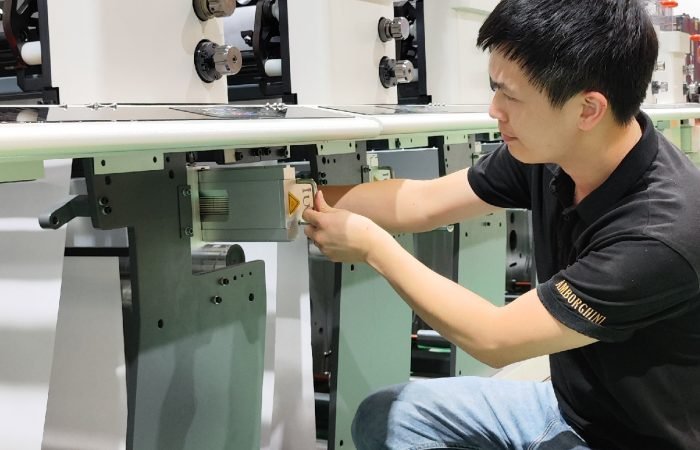Understanding UV Curing System Safety Standards in Printing
The printing industry relies heavily on UV curing systems to achieve fast-drying, high-quality results. However, working with UV technology—especially in label, flexo, offset, and narrow-web printing—requires strict adherence to safety protocols. This guide explores critical safety standards for UV curing systems, focusing on LED UV advancements and best practices across printing methods.
Why UV Curing Safety Matters in Modern Printing
UV curing systems use ultraviolet light to polymerize inks, coatings, and adhesives instantly. While this technology boosts productivity, improper handling can expose operators to risks like UV radiation, ozone emissions, and chemical exposure. Regulatory bodies like OSHA (Occupational Safety and Health Administration) and IEC (International Electrotechnical Commission) enforce guidelines to mitigate these hazards.
For label and narrow-web printers, compact curing units often operate near operators, making shielding and ventilation non-negotiable. Flexo and offset printers, which use larger UV systems, must prioritize heat management and electrical safety.
Key Safety Standards for UV Curing Systems
Radiation Exposure Limits
UV lamps emit UVA, UVB, and UVC radiation, which can harm skin and eyes. ANSI/UL 8800 and IEC 62471 define safe exposure limits. LED UV systems, popular in label printing, reduce risks by emitting narrower UVA spectra with minimal harmful wavelengths. Install UV-blocking shields and require operators to wear protective eyewear (e.g., polycarbonate goggles).Ozone Control
Traditional mercury UV lamps generate ozone, a lung irritant. OSHA mandates ozone levels below 0.1 ppm over 8 hours. Modern LED UV curing systems eliminate ozone production, making them safer for confined spaces like narrow-web presses.Heat Management
High-intensity UV systems can raise ambient temperatures. Flexo printers using hybrid curing (LED conventional) should integrate cooling fans or exhaust systems. Ensure curing units comply with NFPA 70 (National Electrical Code) to prevent overheating.Material Compatibility
UV inks and coatings contain photoinitiators that may cause skin irritation. Follow SDS (Safety Data Sheet) guidelines for handling and storage. Use gloves and barrier creams during ink changes in offset or flexo printing.Electrical Safety
Faulty wiring in UV systems poses fire risks. Regular inspections per IEC 60204-1 ensure proper grounding and insulation. Narrow-web printers should opt for low-voltage LED UV units to minimize electrical hazards.
LED UV Technology: A Safer Choice for Printers
LED UV curing has revolutionized safety in printing. Unlike mercury-based systems, LEDs:
- Eliminate ozone and mercury vapor risks
- Operate at lower temperatures, reducing heat-related accidents
- Consume less energy, lowering fire risks from overloaded circuits
Label printers benefit from LED UV’s instant on/off capability, which prevents accidental exposure during press setup. For flexible packaging (common in narrow-web), LEDs enable safer curing of heat-sensitive substrates.
Best Practices for UV Safety Across Printing Methods
Label Printing
Use enclosed UV systems with automatic shutoffs. Position sensors to deactivate lamps when the press door opens.Flexo Printing
Install interlocks that cut power during plate or ink roller changes. Opt for LED UV for water-based inks to reduce VOC exposure.Offset Printing
Combine UV curing units with exhaust hoods to capture airborne particles. Train staff to replace mercury lamps only when systems are powered down.Narrow-Web Printing
Prioritize LED UV systems with modular designs for easy maintenance. Implement routine air quality checks in small print shops.
Training: The Foundation of UV Safety
Even advanced safety features fail without proper training. Ensure operators:
- Understand emergency shutdown procedures
- Recognize symptoms of UV overexposure (e.g., skin redness, eye discomfort)
- Know how to replace PPE and report equipment malfunctions
Conduct quarterly drills simulating scenarios like lamp breakage or electrical faults.
Final Thoughts
UV curing systems are indispensable for achieving vibrant, durable prints—but their power demands respect. By aligning with global safety standards, adopting LED UV technology, and fostering a culture of vigilance, printers can protect their teams while delivering exceptional results. Whether you’re curing labels on a narrow-web press or coating packaging on a flexo line, remember: safety innovations are as critical as the prints they help create.












